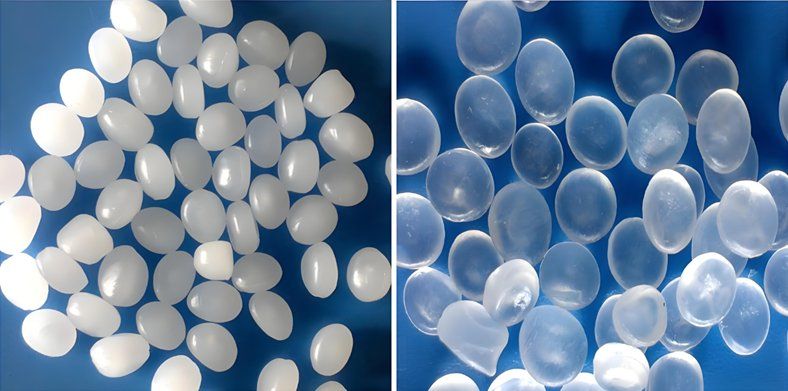
PE raw material PP raw material
Pros:
PP honeycomb core offers better rigidity, with higher compressive strength and flexural modulus. It has superior load-bearing performance. In contrast, PE honeycomb core has poorer rigidity and is more prone to deformation.
PP honeycomb core has good heat resistance, with a continuous service temperature of up to approximately 100°C and a higher heat deflection temperature. PE honeycomb core, on the other hand, has a continuous service temperature of about 70-80°C and is susceptible to softening and deformation under high temperatures.
PP honeycomb core is easy to bond. Its relatively high surface energy allows it to adhere more easily to various panels (such as fibreglass, aluminium, and wood) using adhesives. PE honeycomb core is difficult to bond due to its low surface energy, making it a challenging material to bond. It typically requires corona treatment or special adhesives to achieve reliable bond strength.
PP honeycomb core has a slightly lower density (typically ~0.1 g/cm³), while PE honeycomb core has a somewhat higher density (typically ~0.12 g/cm³), though the difference is minimal.
PP honeycomb core raw materials are widely available, and the production process is mature. PE honeycomb core raw materials are also common, but additional processing (such as surface treatment) may result in slightly higher overall costs.
Cons:
PP honeycomb core is less flexible compared to PE honeycomb core. PE honeycomb core offers better impact resistance and cushioning properties.
PP honeycomb core has poor low-temperature resistance (0°C to -10°C). PE honeycomb core maintains good flexibility in cold environments (-70°C to -100°C), such as freezers or northern winters, and is less prone to brittleness and cracking.
Summary:
In the vast majority of cases, PP honeycomb core is a more versatile and reliable choice, especially in structural and load-bearing applications. Unless there are specific, extreme requirements for impact resistance/cushioning or low-temperature flexibility, PE honeycomb core is generally not recommended due to its bonding challenges, which can pose significant difficulties in production.